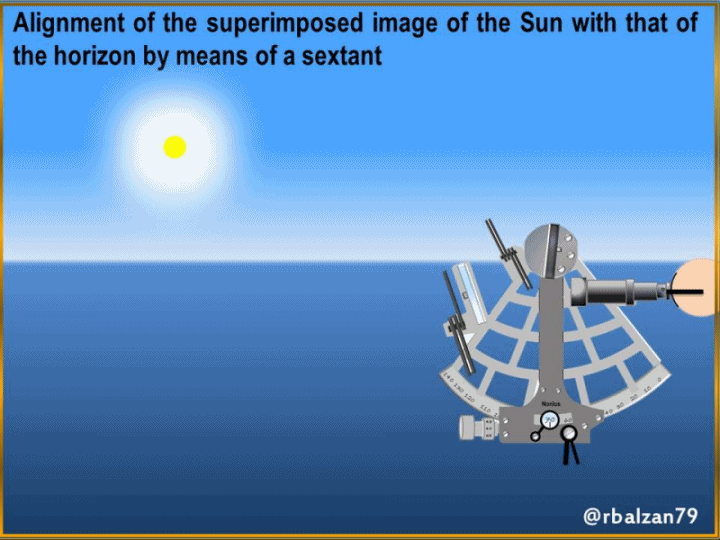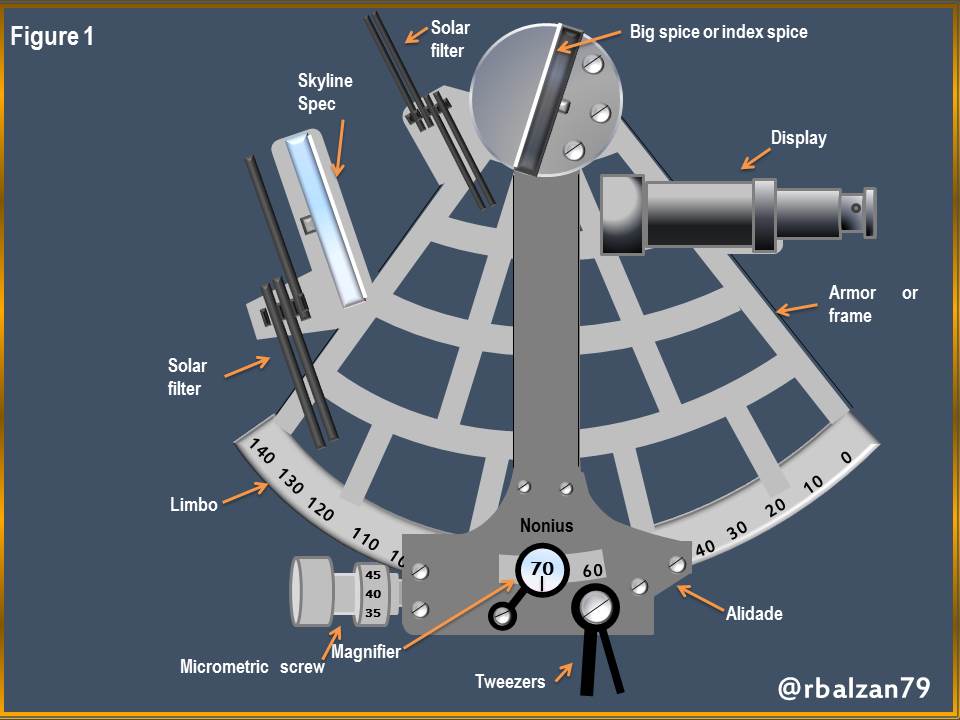Technology in the study of light / Sextant

Introduction
Therefore, we can continue expressing that thanks to the technological advances we have developed instruments with more and more precision regarding the observation of our environment, we know that our natural optical systems (eyes) have a limited capacity of visualization, this is a historical aspect that has inspired the science-technology to continue advancing in the search of the best elements or particular optical components and in this way to structure the most complex optical devices as the sextants.
The sextant
It is an optical instrument where we will find essential components or polished surfaces such as mirrors, this instrument is used to observe bodies or objects distant or far away, in particular is implemented to measure the angle that exists between two bodies or objects, for example, two coastal points.
Also the angle between a certain astronomical body like the Sun, or the Moon, or any star with the horizon, since by knowing the height of these stars and the time at that moment we can establish both the latitude and the longitude of the observer, it is important that we know the parts of this optical instrument through the following figure 1.
Figure 1. Parts of a sextant
The sextant is an optical instrument widely implemented in navigation, therefore, an essential symbol for the nautical world, but also combined with astronomical observations to find a geographical position when navigating, despite having currently GPS, these optical devices are still used in so-called astronomical navigation.
From science we can say that this instrument is based on the laws or principles of geometric optics such as the reflection of light, its name is generated or originates from the fact that its graduated limb constitutes or represents the sixth part of the circumference of a circle.
We must emphasize that a marine sextant is characterized by having the parts described above, the first of these instruments (at least recorded) was developed or designed by John Bird by the year 1957, this instrument with its arrival began to replace the famous Astrolabe, the latter was an astronomical instrument with which you could obtain both the position and height of the stars in our outer universe.
In this way it has been our history, to improve every aspect of any instrument structured for a certain purpose, as the case of the Astrolabe to the sextant, this as we know is possible through the knowledge obtained by science-technology.
Conclusion
In many occasions we could delight with particular optical systems like, mirrors and their different forms of reflections, lenses or prisms and their different ways of refraction or decomposition respectively, this gives us an idea of the impact of these complex instruments, since they are constituted by a set of optical elements described before.
Many are the optical instruments that have facilitated many of the activities related to the daily life of the human being, sometimes their names and purpose are unknown to us, as it can happen with the Sextant, the purpose is to be able to know them in a general way and that they have arrived due to the advances of the nexus described before, science-technology.
Until another time my dear and appreciated readers.
Note: The images are of my authorship, made using the Power Point application, and the animated gifs were made with the Photoscape application.

Thanks for your always good contents :)
!discovery 25
Thank you for your support @delilhavores. Greetings.
This post was shared and voted inside the discord by the curators team of discovery-it
Join our community! hive-193212
Discovery-it is also a Witness, vote for us here
Delegate to us for passive income. Check our 80% fee-back Program
Very striking your animated images and that in this post enhance the theme on the light, sextant and optics. Greetings and thanks for your valuable contribution
Thanks to your friend @carlos84 for your important visit and comment. Greetings.